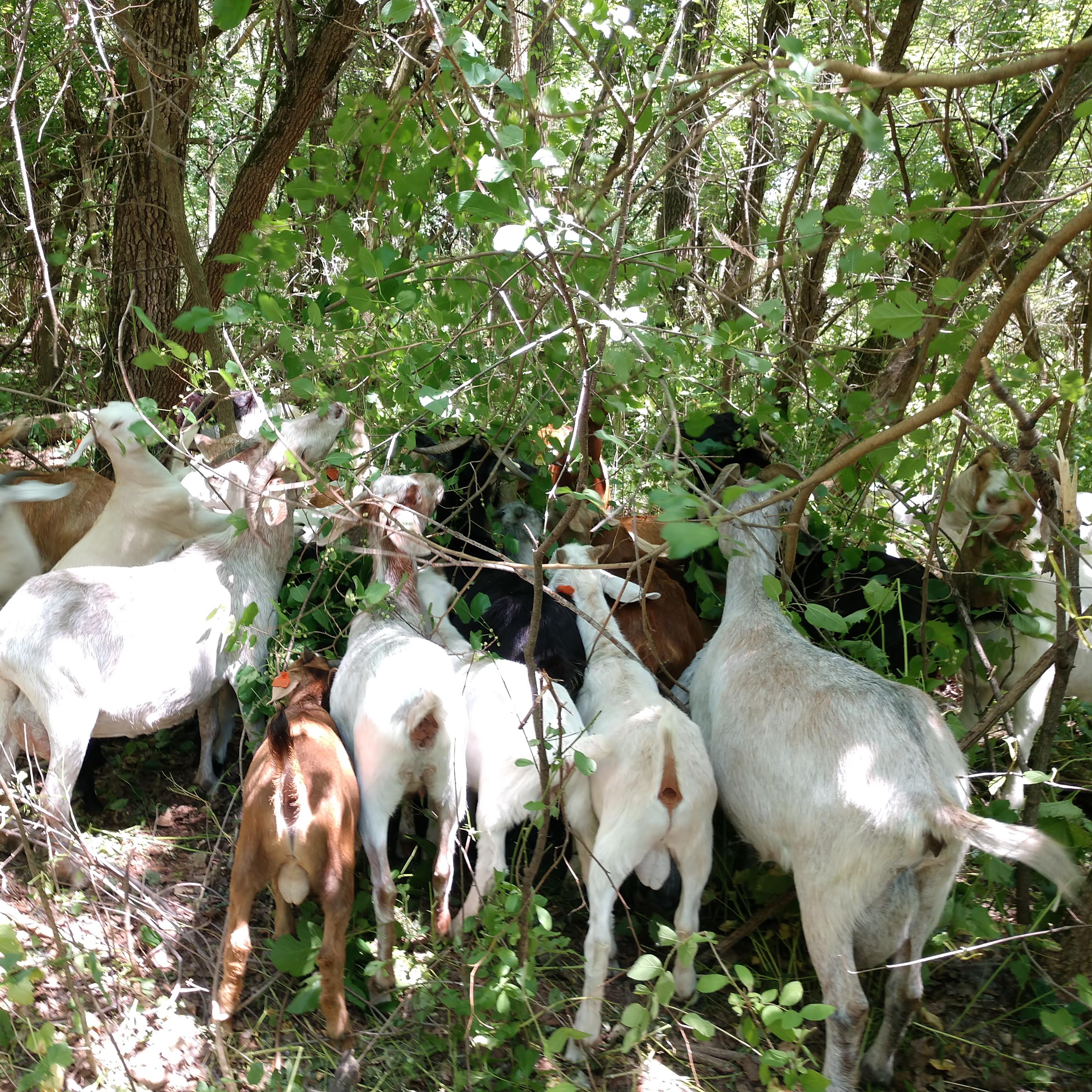Land Management
The City of Madison Parks Division is committed to providing open and natural spaces that support biodiversity, including native plant diversity and pollinator habitat. We strive to meet those needs and support pollinators through our focused and intentional approach to land management, including incorporating native plantings in non-turf areas to increase pollinator habitat. Following the Land Management Plan we manage all general parks, conservation lands and land yet to be developed within the park system. The Plan, approved by the Board of Park Commissioners in May 2023, emphasizes our commitment to the land and provides the framework and maintenance standards required to achieve the Plan’s goals. As part of the Plan, we use a variety of tools such as prescribed burns and goat grazing to establish, promote and maintain natural vegetation.
Land Management PlanIntegrated Pest Management
The decision making process known as Integrated Pest Management, or IPM, includes identifying and monitoring pest species, employing best management practices to prevent or suppress pest populations, and setting thresholds to trigger the use of various pest control methods. IPM is used to control invasive plants throughout the system. More information may be found in the 2022 Parks Division Pesticide Report.
Fire
The open prairies, savannas and woodlands of the Midwest were shaped by fire, and many plant species depend on this natural disturbance to maintain and regenerate their habitat. Fire consumes dead vegetation and fallen leaves, which allows the sun to reach the ground and warm the soil faster in the spring. This enables seeds to germinate and the seedlings to become established before encountering competition from older, taller plants. Fire is applied through carefully planned prescribed burns that are conducted by trained personnel within strict parameters for weather, fire behavior and smoke management. See 2024 Prescribed Burns for locations.

Grazing
Prescribed grazing uses goats in a confined and targeted area to manage and suppress invasive vegetation. Grazing is an important management tool for natural areas, and is applied in accordance with Integrated Pest Management (IPM) principles. Advantages to grazing include reducing the need for chemical control methods, minimizing erosion risks, and improved access to difficult terrain. Grazing occurs after comprehensive planning to determine which locations are conducive to a safe and manageable operation. Periods of grazing will occur during the growing season, with exact timing to depend on weather conditions, analysis of existing vegetation, and management goals. Read Frequently Asked Questions for more information. View the map for this year's targeted grazing locations.
2024 locations are planned. The date schedule is up to the goats! You'll see them for extended grazing in Turville Point Conservation Park and in one or two-week stints this summer at the following:
- Acewood Conservation Park
- Door Creek Park
- Edna Taylor Conservation Park
- Elver Park
- Prairie Ridge Conservation Park
- Cherokee Marsh Conservation Park, North
- Cherokee Marsh Conservation Park, South
Managed Meadows and Sustainable Landscaping
Recognizing the importance of pollinators to our ecosystem, we use a number of strategies to help protect and enhance their habitat. We establish and manage diverse grassland habitats, including native tallgrass prairie plantings in non-turf areas in general parks. We plant and maintain landscape beds throughout the park system to provide continuity of blooming and thus forage sources various pollinators. We continue to move toward increasing native tree and shrub diversity in our plantings. Weed species are hand-pulled from landscape beds, and controlled in larger Managed Meadow areas with properly timed “spot” mowing. These areas account for approximately one quarter of the 4,000 acres of general parkland – mini, neighborhood, and community parks that do not include conservation parks or golf courses. See 2025 General Park Natural Areas.
No Mow May
The practice of leaving lawns unmowed for a month, on a system as large as Madison Parks, creates significant challenges. Instead, Madison Parks focuses on long-term solutions such as increasing the amount of native plants in our landscape beds and improving the quality of managed meadow native prairie plantings throughout the system. These areas are carefully planned and maintained to provide early blooming plant species that provide food for bumble bees and other native pollinators that emerge early in the spring. These areas also provide overwintering habitat that is close to these food sources, reducing the energy needed for pollinators to move from one to the other. You can read more in our pollinator blogs.
Volunteers
We engage in citizen science projects with volunteers at several parks. Examples include the Bumble Bee Brigade and the Integrated Monarch Monitoring Program in which volunteers participate at Owen Conservation Park, the Wisconsin Frog and Toad Phenology Survey at Cherokee Marsh and Edna Taylor conservation parks, and Snapshot Wisconsin trail camera monitoring and Bluebird Restoration Association of Wisconsin Bluebird Trail nest box monitoring at several parks system wide. Volunteers also monitor plant communities in conservation parks to track herbaceous species richness and diversity. Madison is a member of the Bee City, Bird City, and Tree City programs, and continually reaffirms its commitment to sustainability and habitat protection. The City also affirms its commitment to supporting pollinator health through the Mayor’s Monarch Pledge. See Volunteer to learn more.
About
- Annual Report
- Board of Park Commissioners
- Donate
- History
- Impact Fees
- Land Management
- Mall Concourse/State Street Maintenance
- Mission
- Nature Everywhere
- Newsletter
- Park & Open Space Plan
- Photography Contest & Calendar
- Policies
- Projects
- Racial Equity and Social Justice
- Rangers
- Rules
- Task Force on Municipal Golf in Madison Parks
Contact Madison Parks
- City of Madison Parks Division
330 E. Lakeside Street
Madison, WI 53715 - Phone: 608-266-4711
- Contact Form
- Office Hours: Monday - Friday, 8:00am - 4:30pm
- Park Hours: 4:00am - 10:00pm
- After Hours, Weekends & Holidays: Contact Park Rangers, 608-235-0448
